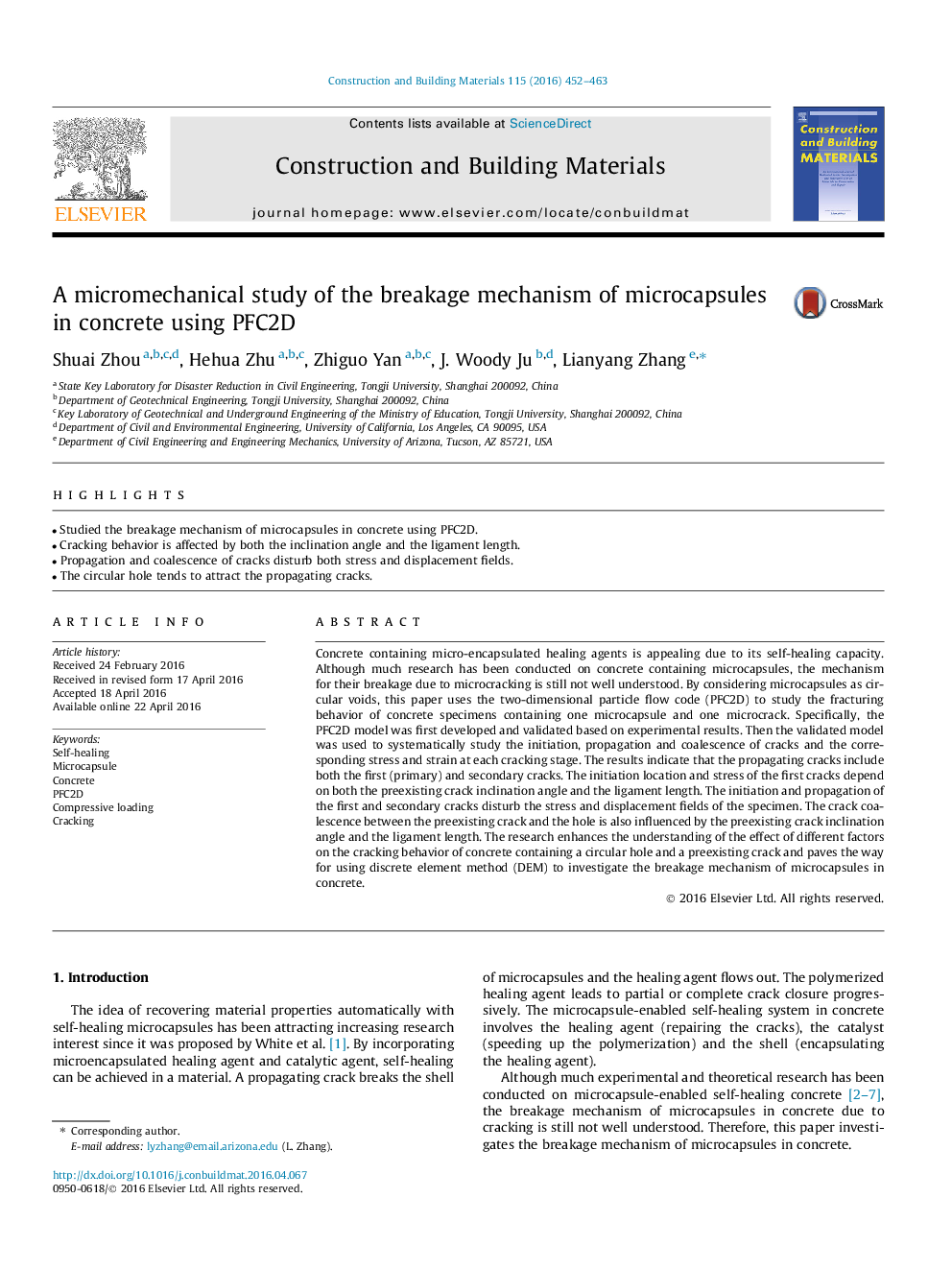| Article ID | Journal | Published Year | Pages | File Type |
|---|---|---|---|---|
| 6718928 | Construction and Building Materials | 2016 | 12 Pages |
Abstract
Concrete containing micro-encapsulated healing agents is appealing due to its self-healing capacity. Although much research has been conducted on concrete containing microcapsules, the mechanism for their breakage due to microcracking is still not well understood. By considering microcapsules as circular voids, this paper uses the two-dimensional particle flow code (PFC2D) to study the fracturing behavior of concrete specimens containing one microcapsule and one microcrack. Specifically, the PFC2D model was first developed and validated based on experimental results. Then the validated model was used to systematically study the initiation, propagation and coalescence of cracks and the corresponding stress and strain at each cracking stage. The results indicate that the propagating cracks include both the first (primary) and secondary cracks. The initiation location and stress of the first cracks depend on both the preexisting crack inclination angle and the ligament length. The initiation and propagation of the first and secondary cracks disturb the stress and displacement fields of the specimen. The crack coalescence between the preexisting crack and the hole is also influenced by the preexisting crack inclination angle and the ligament length. The research enhances the understanding of the effect of different factors on the cracking behavior of concrete containing a circular hole and a preexisting crack and paves the way for using discrete element method (DEM) to investigate the breakage mechanism of microcapsules in concrete.
Related Topics
Physical Sciences and Engineering
Engineering
Civil and Structural Engineering
Authors
Shuai Zhou, Hehua Zhu, Zhiguo Yan, J. Woody Ju, Lianyang Zhang,
